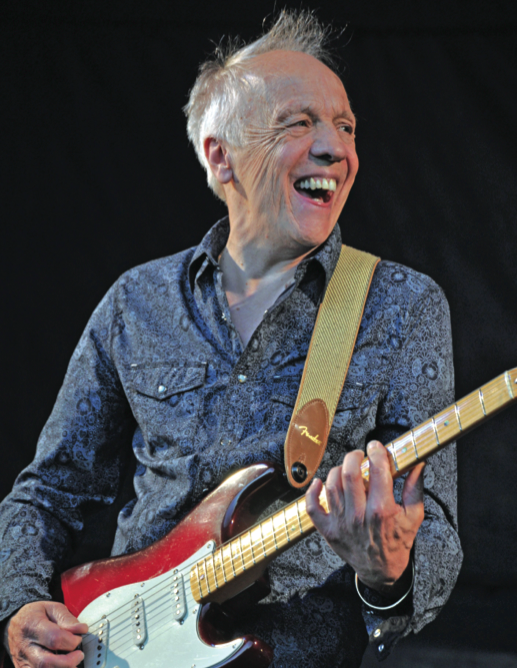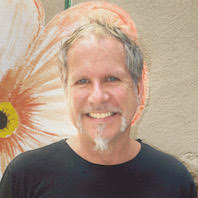Dear Guitar Hero: Robin Trower Discusses 'Bridge of Sighs,' His Vibrato, Guitars, Effects and More

Robin Trower's mind-blowing landmark album Bridge of Sighs came out 40 years ago. But what Guitar World readers really want to know is…
The legendary Beatles engineer Geoff Emerick worked on your great 1974 Bridge of Sighs album. What did he bring to the party? — Michael Maenza
Geoff was certainly a key element in creating that wonderfully huge guitar sound you hear on things like “Day of the Eagle” and the title track. We were really lucky to get him, considering he was one of the top engineers in the world at that time.
It had something to do with my label, Chrysalis Records, being in bed with AIR Studios in London, which was owned by Beatles producer George Martin. The guitar sound on Bridge of Sighs was my invention, but Geoff came up with the way of capturing it to its fullest, and he had a hell of a lot to do with the success of the record.
How quickly was Bridge of Sighs recorded? — Jean Halliday
Quick! Around 16 or 17 days. We were touring a lot around that time and we had been sneaking a lot of material into our set, so we were well rehearsed and knew the songs. The studio was quite big, and we basically all played sectioned off in the same room.
Here was the weird thing, getting back to Geoff Emerick. While we played, Geoff just listened while he walked around the room and placed the mics where he thought things sounded best. He basically put one mic close to the amp, one mid field and one far away. There was no science—it was just him and his magic set of ears.
All the latest guitar news, interviews, lessons, reviews, deals and more, direct to your inbox!
He was great during the mix. He’d let me sort of ride the guitar track, and every once in a while I’d ask whether the guitar was too loud, and he’d always say “no.” The guitar was never too loud for him! But that’s sort of the great thing about playing in a trio. Nothing is ever too loud; nothing really gets in the way of anything else. There is always plenty of space.
The tone on Bridge of Sighs, and on all of your albums, is usually pretty amazing. Do you own a magic Marshall or a special Fender Strat? — Dick Marchand
There was no magic 100-watt Marshall or special guitar. Almost everything I owned was pretty new. I just went to Manny’s, the legendary guitar shop in New York City, and listened to about six or eight Strats acoustically and settled on a black one and a white one. I used those for quite a while. I’m not overly picky.
Several years ago, Fender created a signature model for me, and I’ve got about six or seven of those. I basically switch between two or three favorites. Each one is slightly different, and when I get bored with one I move to the other one. Even though they are made all the same way and should sound exactly alike, each one has its own character, which I think is wonderful.
You’re known as a guitar player, but you also are also a lyricist and songwriter. Do you like writing lyrics or is it a pain? How did you come up with the song “Bridge of Sighs”? — Homer Wagner
I do like to write lyrics! I get a great deal of satisfaction out of songwriting. I had the first line to “Bridge of Sighs” for a long time, but I couldn’t come up with a title to hang it on. Then one day, I was reading the sports pages and came across a racehorse named Bridge of Sighs and thought, What a great title!
You write a lot of slow jams and stoner grooves. Aren’t you ever afraid of boring your audience or putting them to sleep? — Rick Ferrante
As long as a song has some sort of dynamic or emotional power, the tempo doesn’t matter. I love slower songs like “Daydream” and “About to Begin,” because as a guitar player they allow me to go much deeper and really be expressive with my playing.
Your sound has a huge amount of midrange, and even though you use effects and distortion, it’s almost never mushy. What’s your secret? — Paul Kirkovitz
Good question! These days, I use effects designed for me by Mike Fuller over at Fulltone. He created my signature RTO overdrive that allows me a little more drive without losing the clarity of the note, which is really important to my sound. It allows me to keep what I call the “front end” of the note. There’s no mush. In fact, I use the overdrive all the time, and when I want a cleaner sound I just turn down. That’s one of the great benefits of having a name! [laughs] You can get things made to your specifications.
But I also think using heavier strings is an important key to maintaining a nice clear midrange. About 20 years ago I started tuning down a tone so I could use a heavier .012 on the E string and a .015 on the B string and still do all my bends. And using higher action helps. It’s all about getting those strings to ring acoustically, which translates into a great electric sound. That’s where the sound comes from, and you can’t create it after the fact. An instrument always has to sound good acoustically. If it doesn’t, you lose a lot of musicality.
You have a really unique vibrato. Who was your role model? — Antwon “King” Kong
I came to my vibrato naturally very early on. It was just a fortunate thing; I didn’t really have to work on it. Later, I got into B.B. King and started seeing how I could use it more artistically—the emotional power of applying it at the right place and time.
My favorite guitar song of all time is “Daydream,” from your first album, Twice Removed from Yesterday. How was it written? — Susan Weintraub
I actually wrote “Daydream” on an acoustic guitar, and I really tried to capture that kind of sound and feel using an electric guitar. The interesting thing about that recording is that the Uni-Vibe effect was added afterward in the mix. For that reason, the studio version never sounded quite right to me. I never play it live with the effect on it. But perhaps the reason it doesn’t sound right to me is because I conceived it on an acoustic guitar.
Some of your earlier songs like “The Fool and Me” and “Day of the Eagle” have a serious R&B vibe. Were you into disco in the Seventies? — Dylan Koplanski
No! [laughs] I didn’t really like disco, but I understand where the question is coming from. I think that side of those songs might’ve come from our drummer at the time, Reg Isidore, who was really into all kinds of R&B music and brought that element into our sound. And our singer, the late, great James Dewar, was essentially a soul singer. I would classify myself as a rock musician with blues and R&B influences, because all good rock has an element of black music in its foundation. In many ways, the early Robin Trower Band was a sort of fusion of funky influences. I don’t think we realized what we were doing at the time—we were just trying to make good music—but it was a really interesting combination of styles.
Do you ever get sick of being compared to Jimi Hendrix? I know I do! — James Hendricks
Not really. In many ways it’s a compliment. I drew a lot of inspiration from Jimi, particularly the Band of Gypsys era.
Photo: Vicky Robin
A long time ago in a galaxy far, far away Brad was the editor of Guitar World from 1990 to 2015. Since his departure he has authored Eruption: Conversations with Eddie Van Halen, Light & Shade: Conversations with Jimmy Page and Play it Loud: An Epic History of the Style, Sound & Revolution of the Electric Guitar, which was the inspiration for the Play It Loud exhibition at the Metropolitan Museum of Art in New York City in 2019.

